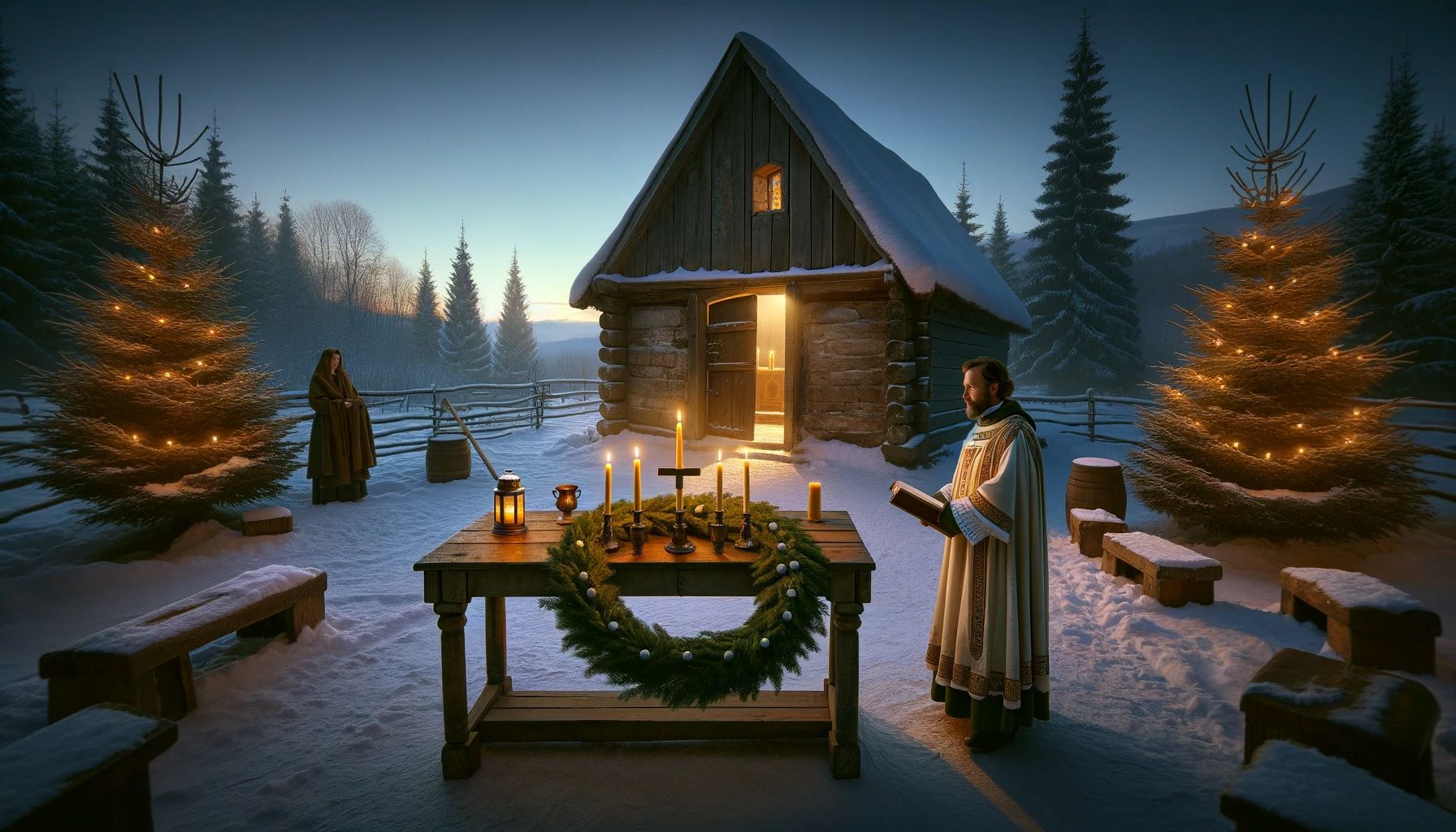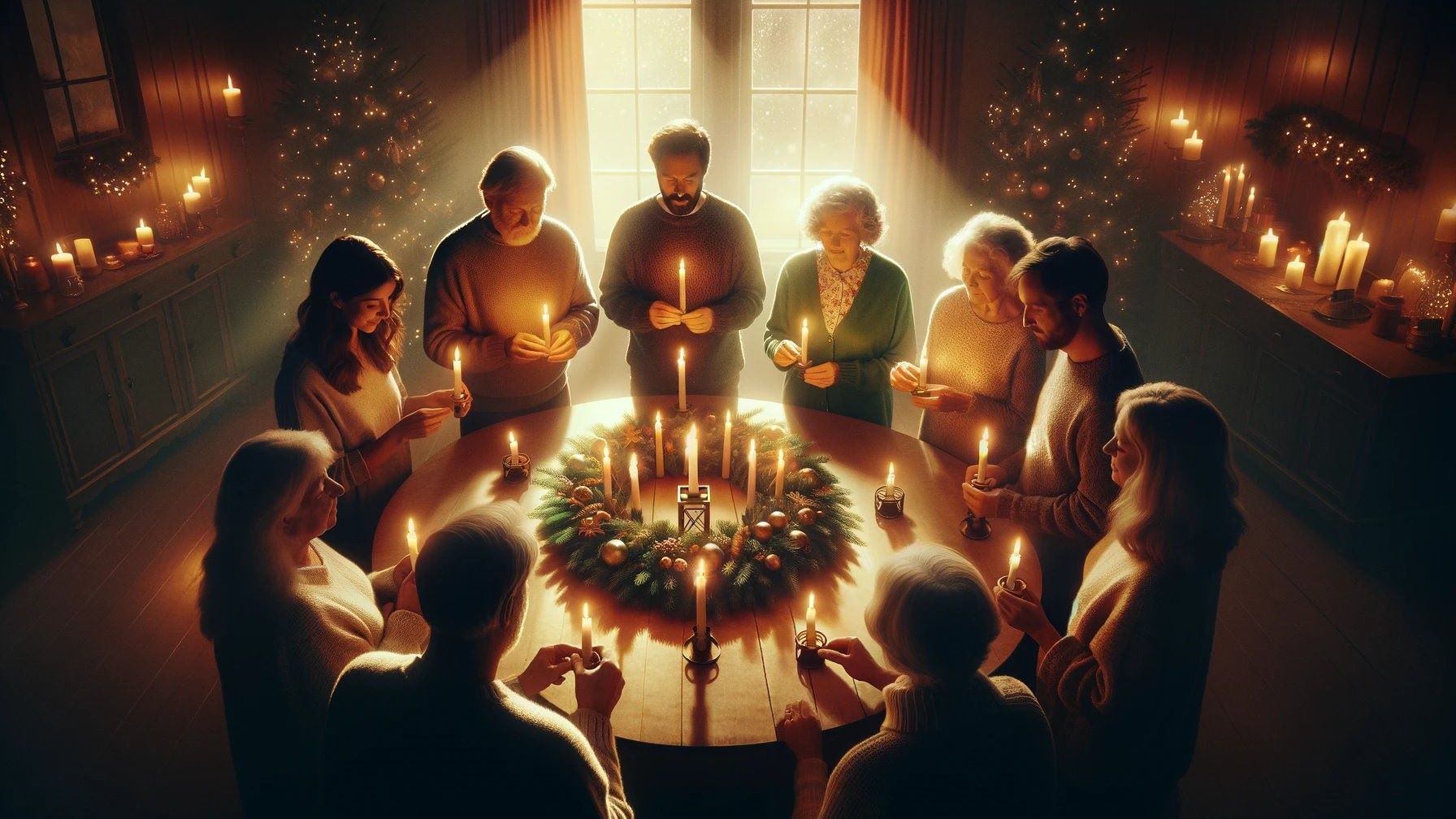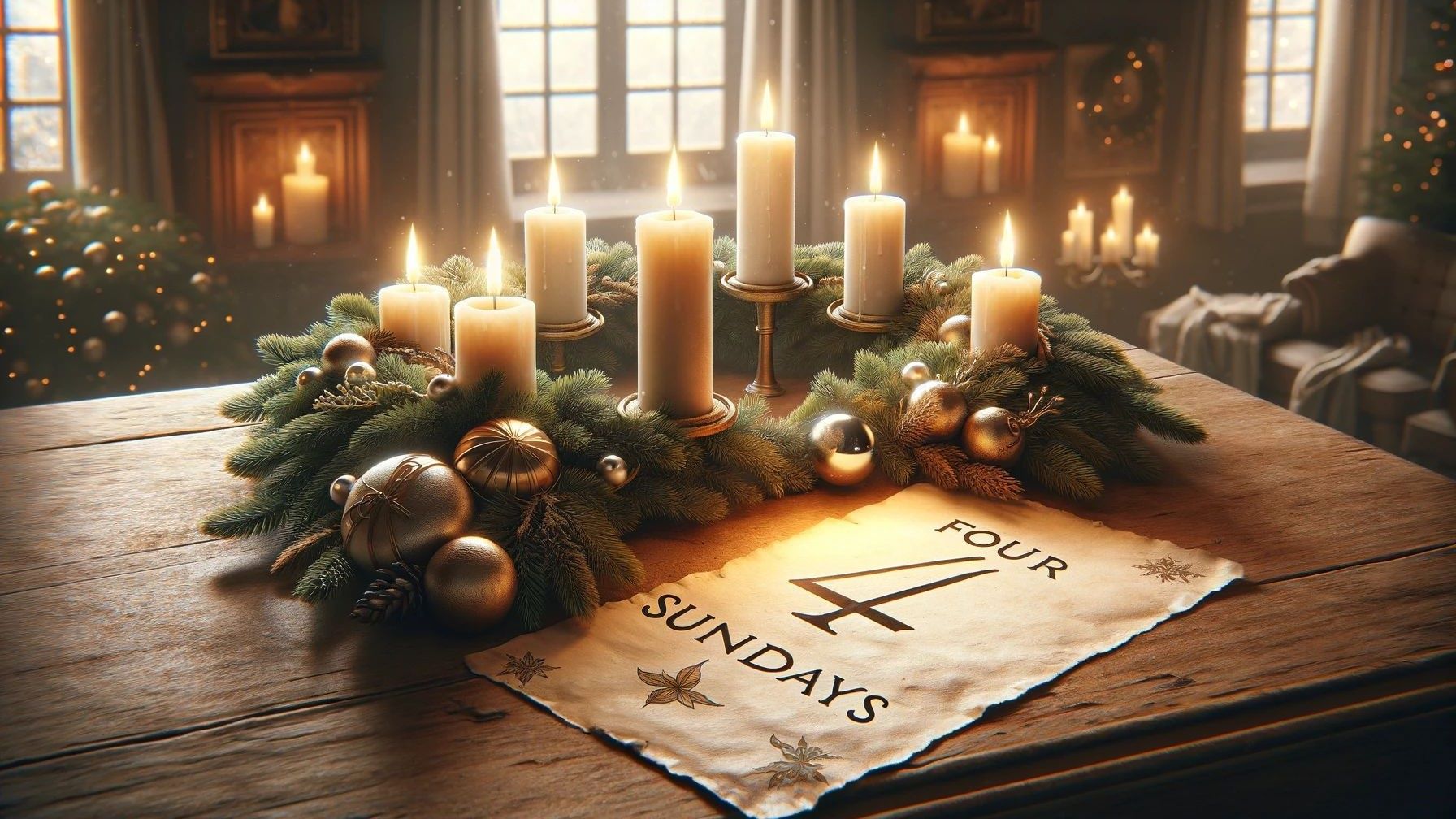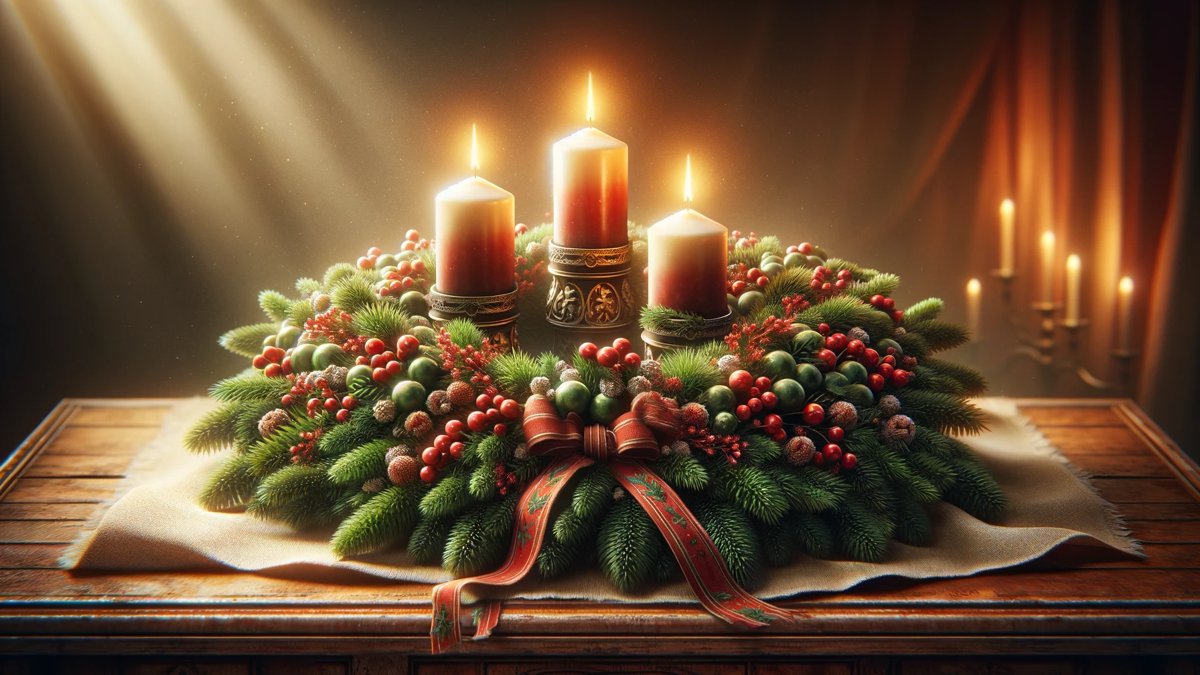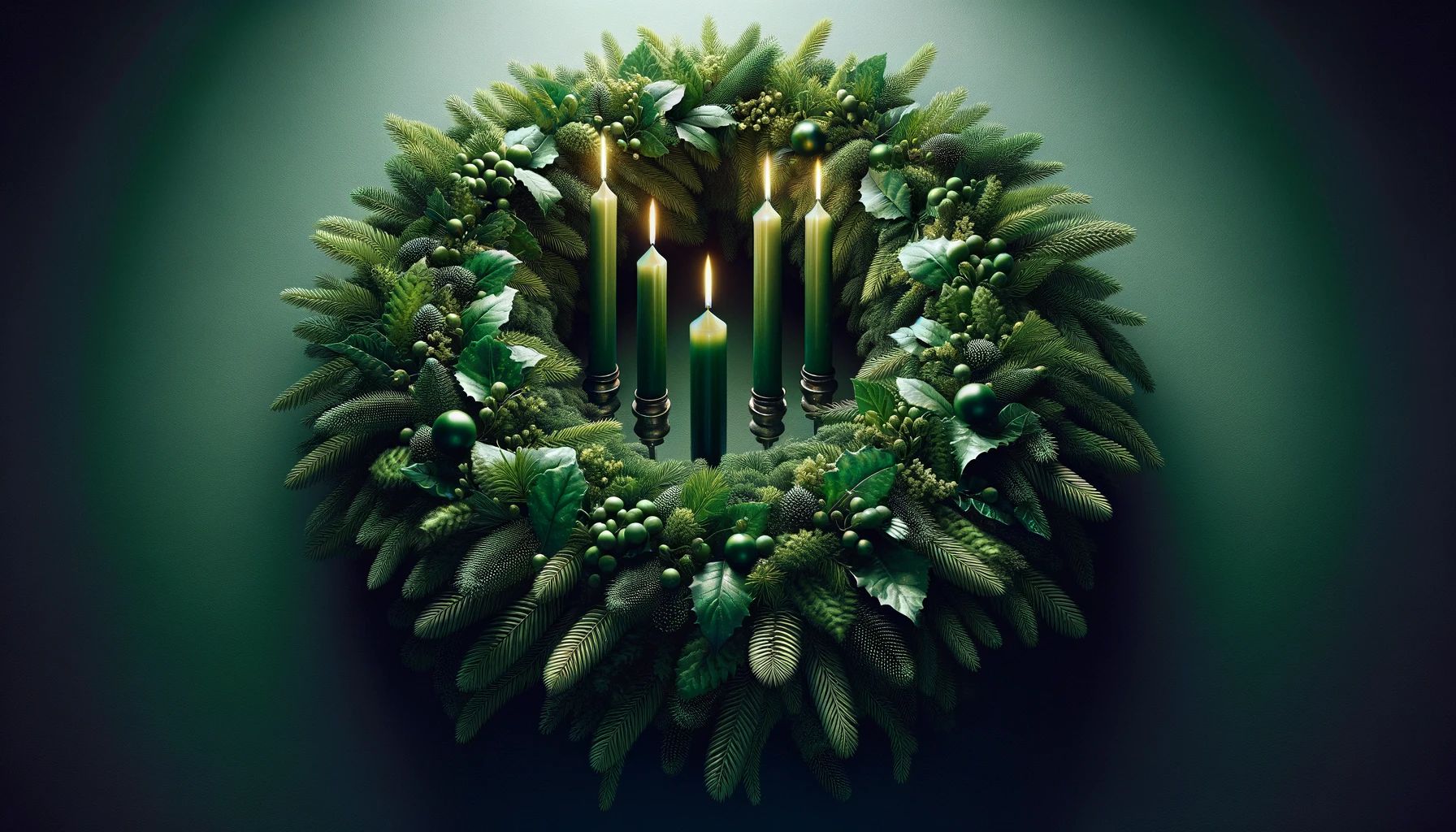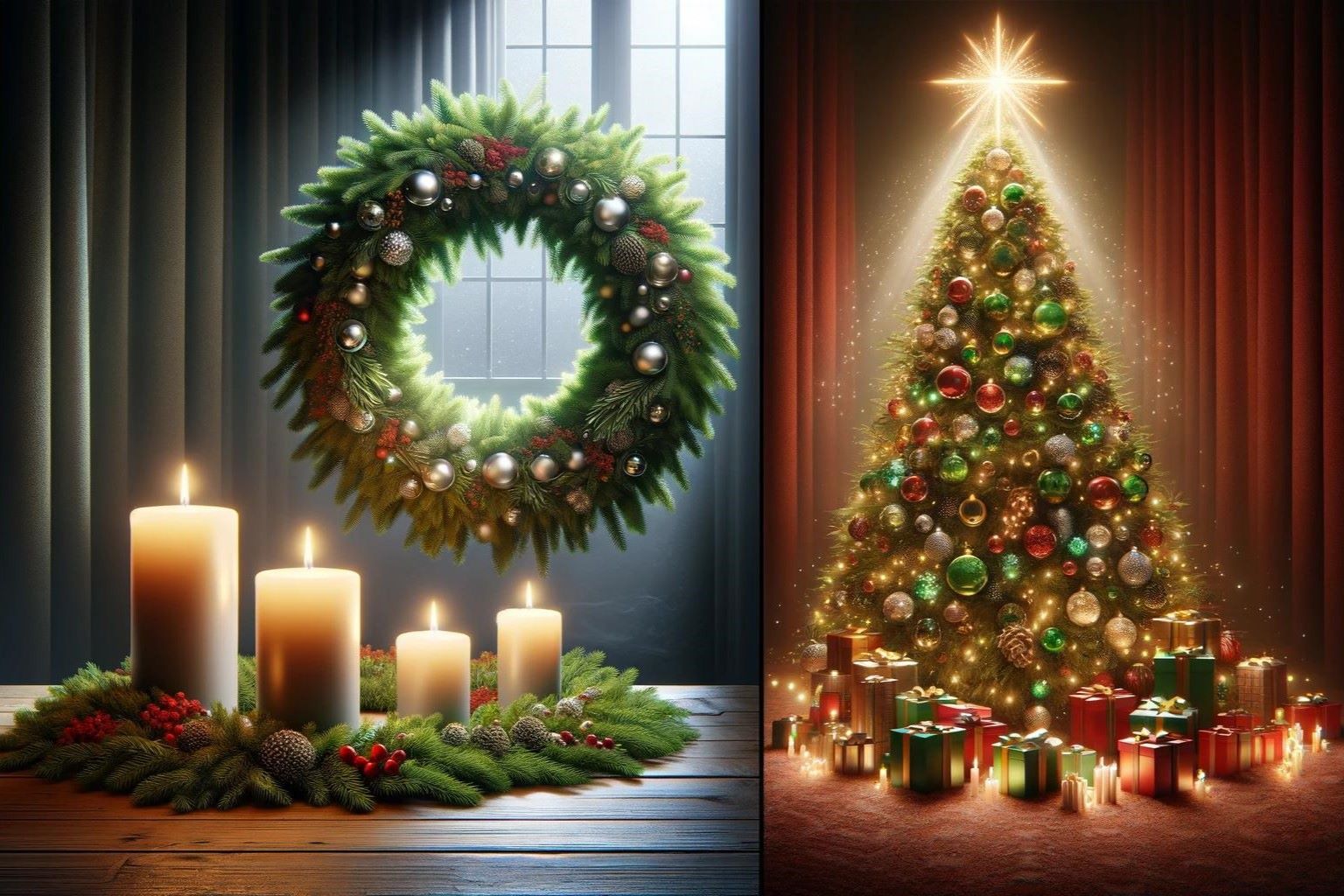Home>Special Themes>How Many Candles Are There On The Advent Wreath


Special Themes
How Many Candles Are There On The Advent Wreath
Published: February 14, 2024
Ericka Andersen, an editor at Christian.net, expertly merges digital strategy with content creation, focusing on faith and societal issues. Her communication skills enhance the platform's engaging narratives, fostering meaningful dialogue on belief's impact on society.
Discover the significance of the Advent wreath and its special themes. Learn how many candles are traditionally used and their meanings. Explore the traditions and symbolism.
(Many of the links in this article redirect to a specific reviewed product. Your purchase of these products through affiliate links helps to generate commission for Christian.net, at no extra cost. Learn more)
Table of Contents
Introduction
The Advent wreath is a cherished symbol of the holiday season, evoking a sense of anticipation and hope as it graces homes, churches, and communal spaces. This timeless tradition, with its roots deeply embedded in history and symbolism, holds a special place in the hearts of many.
The Advent season marks the beginning of the liturgical year in the Christian calendar, encompassing the four Sundays leading up to Christmas. During this time, the wreath serves as a visual reminder of the spiritual significance of the season, inviting individuals to reflect on the themes of hope, peace, joy, and love.
As the days grow shorter and the world envelops itself in a wintry embrace, the warm glow of the Advent wreath's candles illuminates the darkness, symbolizing the light of Christ shining brightly in the hearts of believers. Each candle represents a distinct aspect of the Advent journey, guiding observers through a period of introspection and preparation for the celebration of Christ's birth.
The tradition of the Advent wreath transcends denominational boundaries, uniting individuals in a shared sense of anticipation and contemplation. Whether it is adorned with evergreen foliage, berries, or other decorative elements, the wreath stands as a beacon of hope and a testament to the enduring spirit of the holiday season.
In the following sections, we will delve into the rich history and symbolism of the Advent wreath, exploring the significance of its candles and the profound meaning they hold. Additionally, we will uncover the captivating rituals associated with the lighting of the candles, offering a glimpse into the timeless traditions that continue to inspire and uplift hearts around the world.
Read more: How Many Candles On Advent Wreath
History of the Advent Wreath
The history of the Advent wreath is a tapestry woven with ancient traditions, religious symbolism, and cultural customs. Its origins can be traced back to pre-Christian Germanic and Scandinavian practices, where communities would gather evergreen boughs and light candles to symbolize the anticipation of the return of light and warmth during the winter solstice.
The concept of the Advent wreath as we know it today emerged in the 16th century in Germany. The Lutherans are credited with incorporating this tradition into their spiritual practices, using a wreath adorned with candles as a visual representation of the anticipation of Christ's birth. The circular shape of the wreath, symbolizing eternity and the unending love of God, became a poignant emblem of the season.
Over time, the tradition of the Advent wreath spread throughout Europe and eventually made its way to North America, where it was embraced by various Christian denominations. As it journeyed across continents, the Advent wreath evolved to reflect the cultural nuances of different regions, incorporating diverse foliage and decorative elements while retaining its core symbolism of hope, peace, joy, and love.
Today, the Advent wreath stands as a cherished tradition in many Christian households and congregations, serving as a focal point for communal gatherings and personal reflection during the Advent season. Its rich history and enduring symbolism continue to resonate with people of diverse backgrounds, uniting them in a shared celebration of faith, hope, and the promise of new beginnings.
The evolution of the Advent wreath from its ancient pagan roots to its present-day significance is a testament to the enduring power of tradition and the timeless appeal of symbols that transcend cultural and religious boundaries. As the wreath adorns homes and churches each year, it weaves together the threads of history, faith, and community, inviting all who encounter it to partake in the timeless journey of anticipation and spiritual renewal.
Symbolism of the Candles
The candles adorning the Advent wreath are imbued with profound symbolism, each representing a distinct facet of the Advent journey. As the wreath is illuminated, the candles serve as beacons of hope, guiding observers through a period of spiritual contemplation and anticipation.
The first candle, often referred to as the "Prophet's Candle" or the "Hope Candle," symbolizes the eager anticipation of the Messiah's arrival. It represents the hope and expectation prevalent in the hearts of the faithful as they await the fulfillment of ancient prophecies foretelling the coming of a savior.
The second candle, known as the "Bethlehem Candle" or the "Preparation Candle," signifies the preparation and readiness for the arrival of the Christ child. It serves as a reminder to believers to prepare their hearts and homes to welcome the transformative presence of Christ into their lives.
The third candle, often called the "Shepherd's Candle" or the "Joy Candle," embodies the joy and jubilation surrounding the announcement of Christ's birth. It represents the joyous proclamation of the Good News and the profound sense of fulfillment that accompanies the realization of God's promise to humanity.
The fourth candle, known as the "Angel's Candle" or the "Love Candle," encapsulates the boundless love and compassion embodied in the message of Christ's birth. It serves as a poignant reminder of the unconditional love that permeates the Advent season, inspiring individuals to embrace love as a guiding force in their lives.
The central candle, often white and referred to as the "Christ Candle," is ceremoniously lit on Christmas Eve or Christmas Day. It symbolizes the culmination of the Advent journey, representing the arrival of Christ, the Light of the World, whose presence dispels darkness and brings forth a new era of hope and salvation.
As the candles are progressively lit during the Advent season, they illuminate the path of spiritual introspection and renewal, inviting individuals to immerse themselves in the timeless themes of hope, preparation, joy, and love. The symbolism of the candles transcends religious affiliations, resonating with people from diverse backgrounds and beliefs, and serving as a universal testament to the enduring power of faith and the promise of a brighter tomorrow.
How Many Candles Are on the Advent Wreath
The Advent wreath typically holds four candles, each representing a specific aspect of the Advent season. These candles are traditionally arranged in a circular wreath, symbolizing the eternal nature of God and the unending cycle of the liturgical year. The wreath itself is often crafted from evergreen foliage, signifying the enduring nature of faith and the hope that persists throughout the changing seasons of life.
The four candles on the Advent wreath are lit successively on each of the four Sundays leading up to Christmas. Each candle corresponds to a particular theme, marking the progression of the Advent journey and infusing the season with profound symbolism.
The first candle, known as the "Hope Candle" or the "Prophet's Candle," is lit on the first Sunday of Advent. It represents the eager anticipation of the Messiah's arrival and serves as a poignant reminder of the hope that permeates the hearts of believers as they await the fulfillment of ancient prophecies.
The second candle, often referred to as the "Preparation Candle" or the "Bethlehem Candle," is lit on the second Sunday of Advent. This candle symbolizes the preparation and readiness for the arrival of the Christ child, prompting individuals to prepare their hearts and homes to welcome the transformative presence of Christ into their lives.
The third candle, known as the "Joy Candle" or the "Shepherd's Candle," is lit on the third Sunday of Advent. It embodies the joy and jubilation surrounding the announcement of Christ's birth, inviting believers to rejoice in the Good News and embrace the profound sense of fulfillment that accompanies the realization of God's promise to humanity.
The fourth candle, often referred to as the "Love Candle" or the "Angel's Candle," is lit on the fourth Sunday of Advent. This candle encapsulates the boundless love and compassion embodied in the message of Christ's birth, inspiring individuals to embrace love as a guiding force in their lives and to reflect on the unconditional love that permeates the Advent season.
In addition to the four candles, some Advent wreaths include a central white candle, known as the "Christ Candle," which is ceremoniously lit on Christmas Eve or Christmas Day. This candle symbolizes the culmination of the Advent journey, representing the arrival of Christ, the Light of the World, whose presence dispels darkness and brings forth a new era of hope and salvation.
As the candles are progressively lit during the Advent season, they illuminate the path of spiritual introspection and renewal, inviting individuals to immerse themselves in the timeless themes of hope, preparation, joy, and love. The symbolism of the candles transcends religious affiliations, resonating with people from diverse backgrounds and beliefs, and serving as a universal testament to the enduring power of faith and the promise of a brighter tomorrow.
The Lighting of the Candles
The ritual of lighting the candles on the Advent wreath is a poignant and symbolic tradition that holds deep spiritual significance for many individuals and communities. As the Advent season unfolds, the lighting of each candle serves as a ceremonial act, marking the progression of time and infusing the atmosphere with a sense of anticipation and reverence.
On the first Sunday of Advent, the initial candle, often referred to as the "Hope Candle" or the "Prophet's Candle," is ceremoniously lit, casting a warm glow that symbolizes the eager anticipation of the Messiah's arrival. This act of kindling the first flame serves as a poignant reminder of the hope that permeates the hearts of believers as they await the fulfillment of ancient prophecies foretelling the coming of a savior. As the candle's flame flickers into life, it illuminates the path of spiritual introspection, inviting individuals to embark on a journey of anticipation and preparation for the joyous celebration of Christ's birth.
The following Sunday heralds the lighting of the second candle, often known as the "Preparation Candle" or the "Bethlehem Candle." As its flame is ignited, it serves as a visual representation of the preparation and readiness for the arrival of the Christ child. This act prompts individuals to prepare their hearts and homes, creating a sacred space to welcome the transformative presence of Christ into their lives. The gentle glow of the candle serves as a beacon of hope, guiding observers through a period of introspection and spiritual contemplation, fostering a sense of unity and purpose as the Advent journey unfolds.
On the third Sunday of Advent, the lighting of the third candle, often called the "Joy Candle" or the "Shepherd's Candle," infuses the atmosphere with a palpable sense of jubilation and anticipation. As its flame dances into existence, it embodies the joy and celebration surrounding the announcement of Christ's birth, inviting believers to rejoice in the Good News and embrace the profound sense of fulfillment that accompanies the realization of God's promise to humanity. The radiant glow of the candle serves as a testament to the enduring power of joy and the transformative nature of the Advent season.
Finally, on the fourth Sunday of Advent, the lighting of the fourth candle, often referred to as the "Love Candle" or the "Angel's Candle," encapsulates the boundless love and compassion embodied in the message of Christ's birth. As its flame is kindled, it inspires individuals to embrace love as a guiding force in their lives, reflecting on the unconditional love that permeates the Advent season. The gentle illumination of the candle serves as a poignant reminder of the enduring power of love and the unifying spirit of the holiday season.
In addition to the four candles, some Advent wreaths include a central white candle, known as the "Christ Candle," which is ceremoniously lit on Christmas Eve or Christmas Day. This act symbolizes the culmination of the Advent journey, representing the arrival of Christ, the Light of the World, whose presence dispels darkness and brings forth a new era of hope and salvation. As its radiant glow fills the space, it serves as a poignant reminder of the transformative power of Christ's love and the promise of new beginnings.
The ritual of lighting the candles on the Advent wreath is a timeless tradition that transcends denominational boundaries, uniting individuals in a shared sense of anticipation and contemplation. As each candle is kindled, it illuminates the path of spiritual introspection and renewal, inviting individuals to immerse themselves in the timeless themes of hope, preparation, joy, and love. The symbolism of the candles serves as a universal testament to the enduring power of faith and the promise of a brighter tomorrow, infusing the Advent season with profound meaning and spiritual significance.
Read more: How Many Candles Are Lit For Advent
Conclusion
The Advent wreath, with its rich history, profound symbolism, and captivating rituals, stands as a timeless emblem of hope, anticipation, and spiritual renewal. As the four candles are progressively lit during the Advent season, they illuminate the path of introspection and contemplation, inviting individuals to immerse themselves in the timeless themes of hope, preparation, joy, and love. The symbolism of the candles transcends religious affiliations, resonating with people from diverse backgrounds and beliefs, and serving as a universal testament to the enduring power of faith and the promise of a brighter tomorrow.
The tradition of the Advent wreath, rooted in ancient customs and infused with Christian symbolism, continues to inspire and uplift hearts around the world. Its evolution from pre-Christian practices to its present-day significance is a testament to the enduring power of tradition and the timeless appeal of symbols that transcend cultural and religious boundaries. As the wreath adorns homes and churches each year, it weaves together the threads of history, faith, and community, inviting all who encounter it to partake in the timeless journey of anticipation and spiritual renewal.
The lighting of the candles on the Advent wreath is a poignant and symbolic tradition that holds deep spiritual significance for many individuals and communities. Each candle, from the Hope Candle to the Love Candle, serves as a beacon of hope, guiding observers through a period of spiritual contemplation and anticipation. The ritual of kindling these flames marks the progression of time and infuses the atmosphere with a sense of anticipation and reverence, fostering a spirit of unity and purpose as the Advent journey unfolds.
As the Advent season unfolds, the warm glow of the Advent wreath's candles illuminates the darkness, symbolizing the light of Christ shining brightly in the hearts of believers. The wreath serves as a visual reminder of the spiritual significance of the season, inviting individuals to reflect on the themes of hope, peace, joy, and love. It stands as a beacon of hope and a testament to the enduring spirit of the holiday season, uniting individuals in a shared sense of anticipation and contemplation.
In conclusion, the Advent wreath, with its timeless traditions and profound symbolism, continues to captivate hearts and minds, inviting individuals to embark on a journey of spiritual introspection and anticipation. As the candles are lit, they serve as beacons of hope, guiding observers through the Advent season and illuminating the path toward the joyous celebration of Christ's birth. This cherished tradition, with its enduring message of hope and love, remains a poignant symbol of the enduring spirit of the holiday season, inspiring individuals to embrace the promise of new beginnings and the transformative power of faith.





